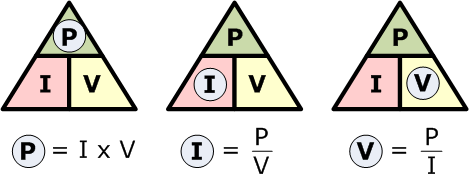Electrical Power
Rate of Transfer
⇒ Electrical appliances are pretty handy in that they can take electrical energy and convert it into energy which is useful to us. For example, a light bulb turns the electrical energy into light.
⇒ This is an example of a transfer of energy
⇒ The electrical power of an electrical appliance informs you of how quickly this transfer takes place
- The unit of electrical power is the watt
⇒ If an appliance has a high wattage, it has a high power - as the wattage of an appliance increases, so does the amount of energy it transfers each second e.g. an 80 watt lightbulb will be brighter than a 40 watt lightbulb
Power = Current x Voltage
⇒ You can calculate power using the following equation:


Kilowatt-hours
⇒ The electricity meter in your home will tell you how much energy you use in killowatt-hours (kWh)
⇒ A kilowatt-hour is the amount of electrical energy converted by a 1kW (1000 watt) appliance that is left on for 1 hour
⇒ If an electrical appliance has a high power rating and/or you leave it on for a long time, it will consume more energy and cost more money.
⇒ Remember this equation to work out the kWh:

Example
⇒ What is the cost of leaving a 50W bulb on for 45 minutes if one KwH costs 10p?
⇒ Answer: Energy consumed = Power x Time = 0.05kW x 3/4 hour = 0.0375 kWh
- Cost = number of units x price per unit = 0.0375 x 10 = 0.375p